It’s always a good time in New Orleans. The city is known for its flavorful food, incredible music scene and celebratory prowess. Its parades are legendary. Its cocktail game is prime. Its energy is consistently high. Few other American cities can claim its own culinary tradition, let alone the invention of a new musical genre.
So many different cultures have made New Orleans the vibrant, dynamic city it is today: African, Caribbean, Native American, French, German, Irish, Vietnamese, Latin American. We spoke with several Fora Advisors who are New Orleans experts, and incorporated their wisdom into our ultimate guide to New Orleans, where we outline everything you need to know about the city, including where to stay, what to do and where to eat. When you’re ready to head south, connect with Fora to plan and book your dream Nola getaway.
Need to know
Airport: Louis Armstrong New Orleans International Airport (MSY), about 25 minutes from downtown, is the city’s main entry point.
Transportation: Downtown is pretty walkable, although the streets and sidewalks are not in the best shape, especially for those with mobility issues. Uber when you can or hop on a streetcar. The app Le Pass is the most seamless and efficient way to pay for streetcar, ferry and bus rides.
Best time to visit: Fall is the sweet spot. October and November bring milder weather and fewer crowds. Spring, too, is lovely. Mardi Gras — usually in late February or March — is fun, if crowded. The summer months through September tend to get hot and muggy, and September is hurricane season. But, as Fora Advisor Gray Grandy says, “Embrace the heat! It is hot, always. Wear light clothes and enjoy.”
Ideal length of stay: New Orleans is perfect for a long weekend, Fora Advisor Alyssa Manning, a New Orleans native, said. You can cover a lot of ground in two to four days.
Signature dishes: Oysters, gumbo (hearty stew served over rice), jambalaya (spiced rice mixed with vegetables and seafood or meat), bananas foster (cooked bananas with rum sauce and ice cream), beignets (fried pastries dusted with powdered sugar), po’ boys (short for “poor boys”; big sandwiches layered on French bread), muffuletta (cured-meat sandwich with olives and cheese), snoballs (snowcones), cocktails
What to wear: In New Orleans, anything goes, clothes wise. But again, the city is hot. Pack breezy, airy outfits, plenty of sun protection and good sturdy walking shoes.
Where to stay
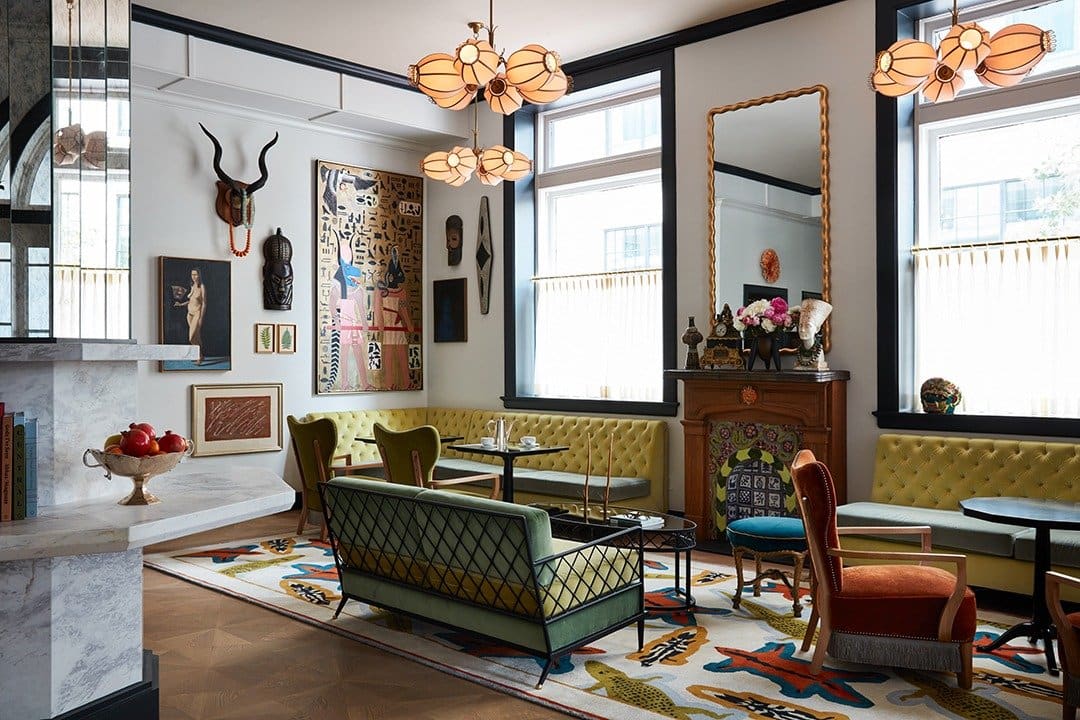
Image courtesy of Maison Métier
Just like New Orleans, the city’s best hotels are filled with character. Bespoke, playfully designed gems and classic, luxurious hotels ensure there’s something for everyone. The broad range of price points makes the city even more accessible. Here, you don’t have to spend a lot to stay somewhere special.
You’ll most likely stay in the lively, energetic French Quarter (where you’ll find infamous Bourbon Street) or in the genteel, refined Garden Strict, a quieter area home to Victorian mansions and classic Southern sophistication. But don’t underestimate the artsy Warehouse District. It’s very walkable, and there’s lots to explore: galleries, trendy restaurants, museums. Another walkable neighborhood is Tremé, the country’s oldest African American neighborhood. Savor the best authentic Creole food, wander amidst colorful cottages and visit notable landmarks like St. Augustine Church and Armstrong Park, named after the jazz legend. Marigny is great for live music, art and hipster, local feel.
Four Seasons Hotel New Orleans: This French Quarter icon, on the Mississippi River, is perfect for families, couples and anyone looking for luxury. You must grab a drink at the iconic Chandelier Bar, a glamorous spot for cocktails and caviar. When you book Four Seasons with Fora, you’ll enjoy exclusive Four Seasons Preferred Partner benefits.
Maison Métier: The former Maison de la Luz is a community favorite. You’ll love the vibrant, eclectic décor, Parisian vibes and proximity to the city’s bustling Magazine Street. Fora’s partner perks include $100 food / beverage credit, $35 daily breakfast credit, an upgrade and extended check-in/out whenever possible.
Virgin Hotels New Orleans: Virgin’s signature bold, cheeky, playful décor and cheeky energy feels at home in New Orleans. Don’t miss the rooftop pool, nor the of-the-moment happenings, from drag brunch to DJ’d parties. Fora Perks include $25 food / beverage credit, a welcome amenity. Amd upgrade whenever possible and late check-out.
Kimpton Hotel Fontenot: A pet-friendly, youthful stay in the heart of the action. The on-site Peacock Room is something of a legend, with bold blue hues, mosaic floors, lots of patterns and punch-bowl cocktails. Fora’s partner perks include $50 hotel credit, welcome amenities, an upgrade and late check-out whenever possible.
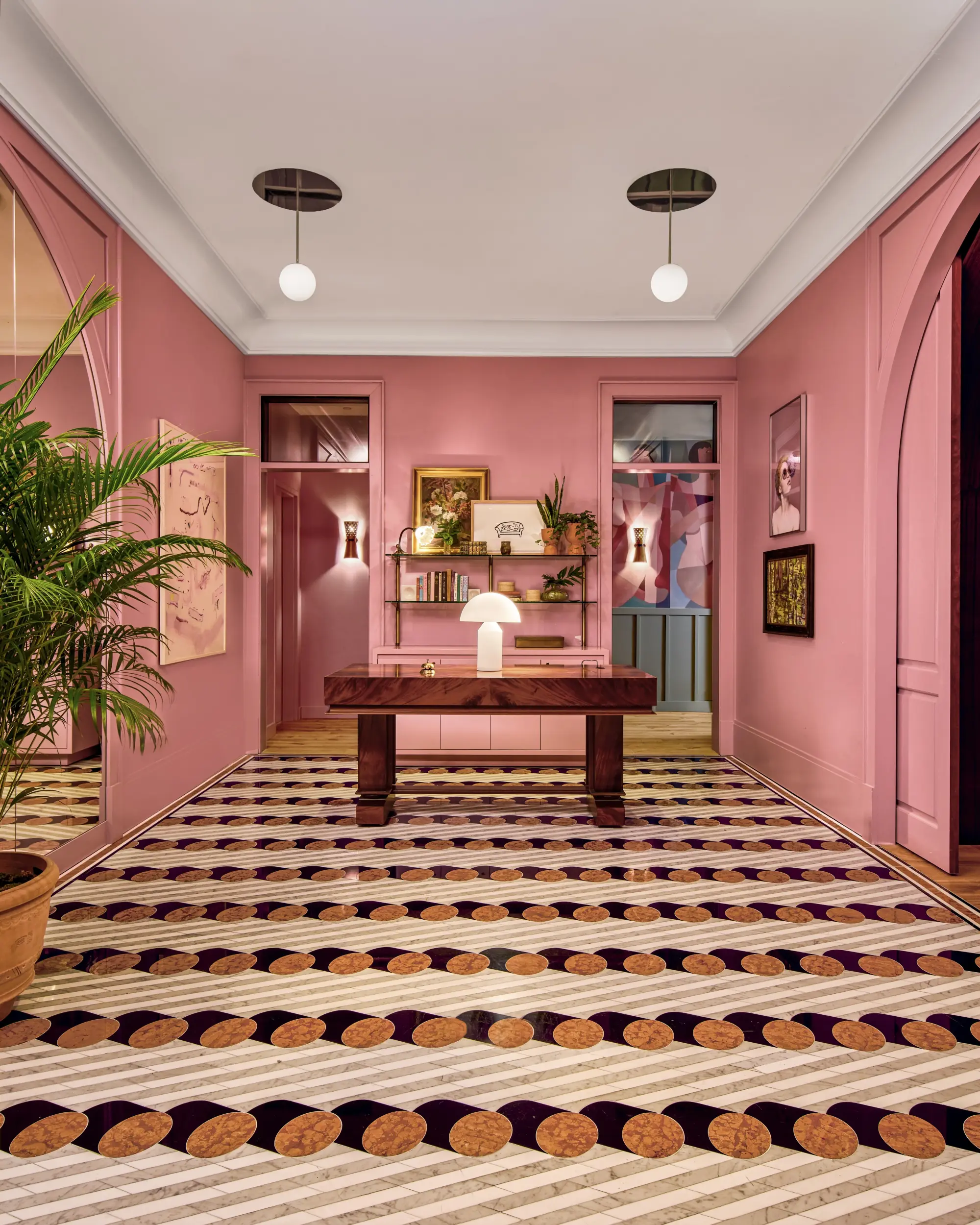
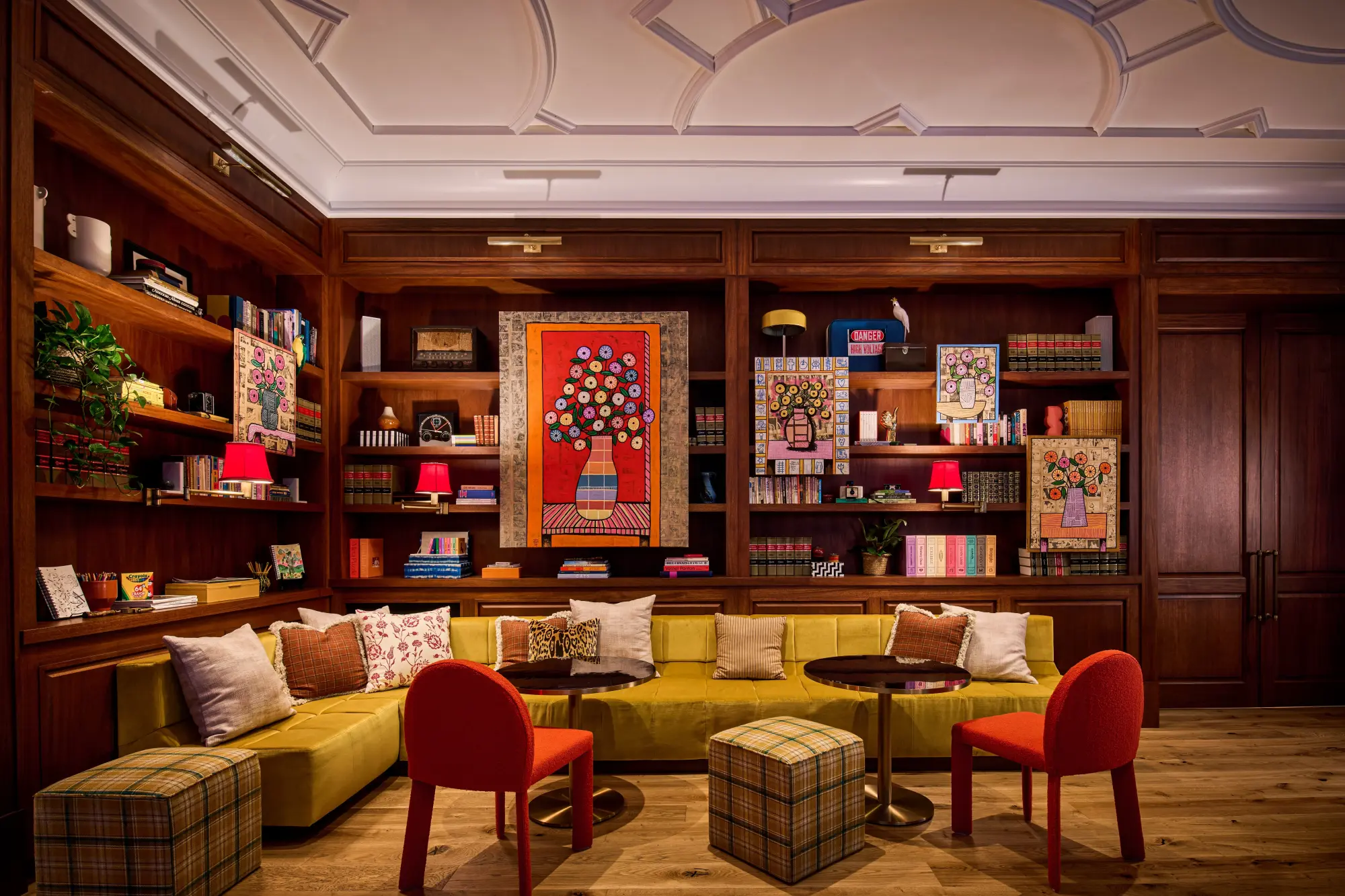


Images courtesy of Virgin Hotels New Orleans
The Eliza Jane: This boutique hotel is housed in restored 19th-century warehouses. The aesthetic is sweet and feminine; it’s posh and refined, with purples and pinks, exposed brick and colorful carpeting. Fora’s Hyatt Privé partner perks include $50 hotel credit, a welcome amenity, breakfast daily, an upgrade and early check-in whenever possible.
Hotel Saint Vincent: This 75-room gem, on Magazine Street in the Garden District, is effortlessly chic. It’s handsome and bold, with fun details like pink bathroom tiles and upholstered velvet couches in the bar. Be sure to visit ByGeorge, in the looby, and peruse its selection of luxury items for men and women, courtesy of brands like LOEWE, vintage Rolex, Dries Van Noten and Westman Atelier, to name a few.
Hotel Peter and Paul: This thoughtfully restored church and school is filled with art, antiques and furniture made by local artisans. It feels like a hyper-local, well-kept secret. Try the Mediterranean small plates and excellent cocktails at the Elysian Bar, and treat yourself to something from Sunday Best, a delightful shop in the church’s former convent.
The Windsor Court: Luxe, refined and sophisticated, with a rooftop bar and an air of regal grandeur. Fora Perks include $100 hotel credit, $40 daily breakfast credit, an upgrade and extended check-in/out whenever possible.
History & culture
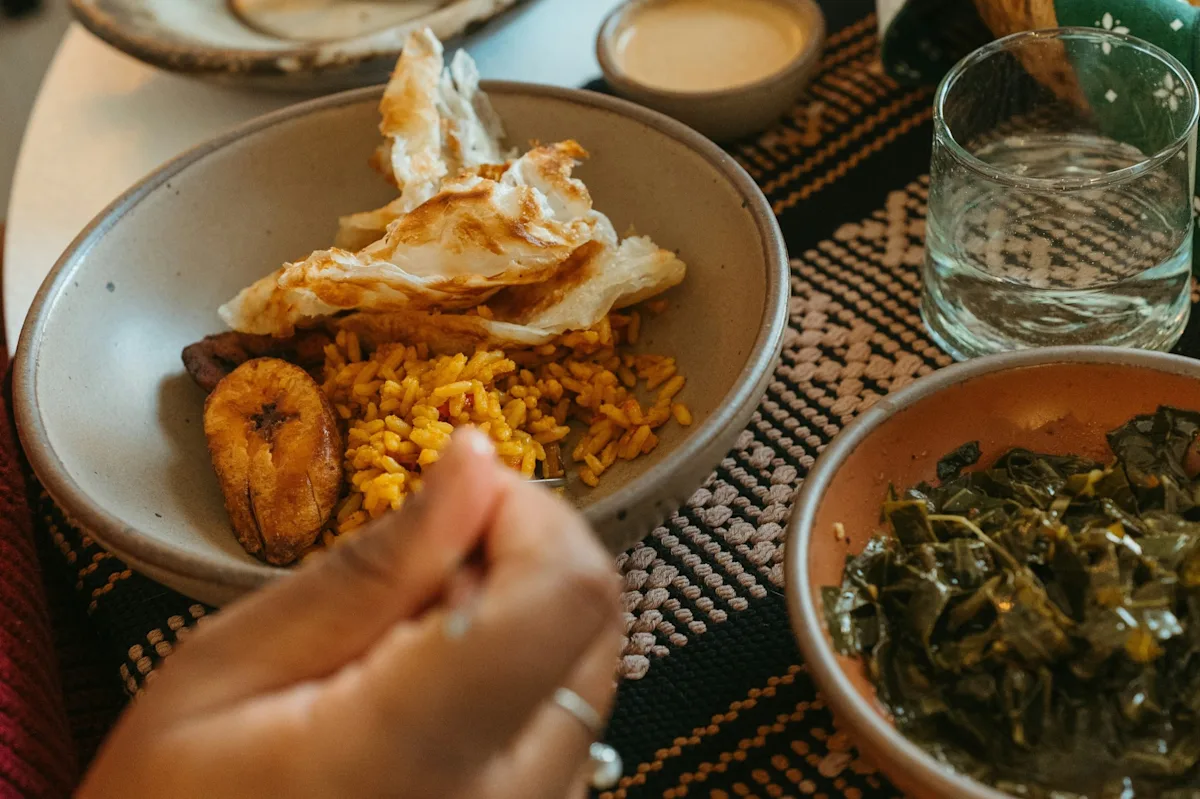
New Orleans has always been multicultural. The French founded the city in 1718, but before then, various Native American tribes inhabited the region. These tribes called the area “Bulbancha,” or “land of many tongues.” The French Quarter was the seed of the city; it was also a prominent Native American gathering place.
Unfortunately for the French, their new port city was not very profitable. And after losing the French and Indian War in the 1760s, they ceded the entire Louisiana territory to the Spanish. In 1800, the Spanish sold Louisiana back to the French. Three years later, French emperor Napoleon Bonaparte sold it to the US. New Orleans officially became an American city in 1803, with the Louisiana Purchase. The city was one a main center of domestic slave trade, and quickly grew profitable, especially as steamboats started to travel up and down the Mississippi River. (Indeed, the first steamboat to navigate the Mississippi was called the New Orleans.)
The confluence of so many cultures is still evident in the city today. Creole cuisine, for instance, originated in the 18th century. It’s a mix of Native American, West African, French and Spanish influences, and was created by the city’s free and enslaved Black populations, who passed down recipes made from inexpensive ingredients like rice and greens. Cajun cuisine originated from deported Acadians, originally from eastern Canada. Not much can grow that far north; their food centered on hearty root vegetables, corn and local livestock (e.g., wheat bread became cornbread). When they moved down to Louisiana, the stark climate difference forced them to adapt, and they incorporated several African and Native American culinary traditions.
Food is a big part of New Orleans’ culture, and so is music. The city is the birthplace of jazz, the United States’ only indigenous music genre. Jazz is a lively mélange of African drumming and dance, Caribbean rhythms, European tradition and marching-band instruments, which were used in the Civil war. Blues, call-and-response and slave songs also heavily influenced the new genre, which quickly became a musical tableau of the city’s history and multiculturalism.
Activities
There is always something going on in New Orleans. Fora Advisor Gray Grandy said the city is fun for friend groups and partying, but it’s equally great for families. Here are some of our advisors’ favorite things to do in New Orleans.

Image courtesy of Four Seasons Hotel New Orleans
Peruse the galleries, boutiques, art galleries, restaurants and bars that line Magazine Street.
Hop on a boat and sail on the Mississippi River, which runs through the city.
Ride a cable car through the calm, beautiful Garden District.
Savor Cafe Du Monde’s famous beignets, but go to their location in City Park (there’s less of a line), Gray said, and walk among the lakes and oak trees.
Preservation Hall is a must. The iconic music hall is the go-to place for live jazz. Be sure to snag tickets in advance.
Master Cajun classics like gumbo and jambalaya at the New Orleans School of Cooking before feasting on the fruits of your labor.
Try a small-group tour offered by New Orleans Secrets. Options include food and cocktail tours, voodoo tours, haunted tours, queer history tours and more.
If you’re up for a bit of a drive (an hour or more), opt for a swamp or bayou tour just outside the city.
Wander around the 10-acre New Orleans Botanical Garden, home to over 2,000 plant varieties, a sculpture garden, a train garden, a Japanese garden and a conservatory (don’t miss its fossil exhibit).
New Orleans’ museum game is strong. A couple highlights include the New Orleans Museum of Art (NOMA), which has a notable collection of American, French, African and Japanese works, and the National World War II Museum, an extensive study of the war that changed the world, with meaningful exhibitions highlighting famous and everyday heroes alike.
Restaurants & bars
When asked about her favorite New Orleans activities, Fora Advisor Alicia Ausin said, “Eating, music, museums, eating.” It’s no accident eating was mentioned twice. Food is a huge part of the city’s culture and draw. Here’s where to indulge.
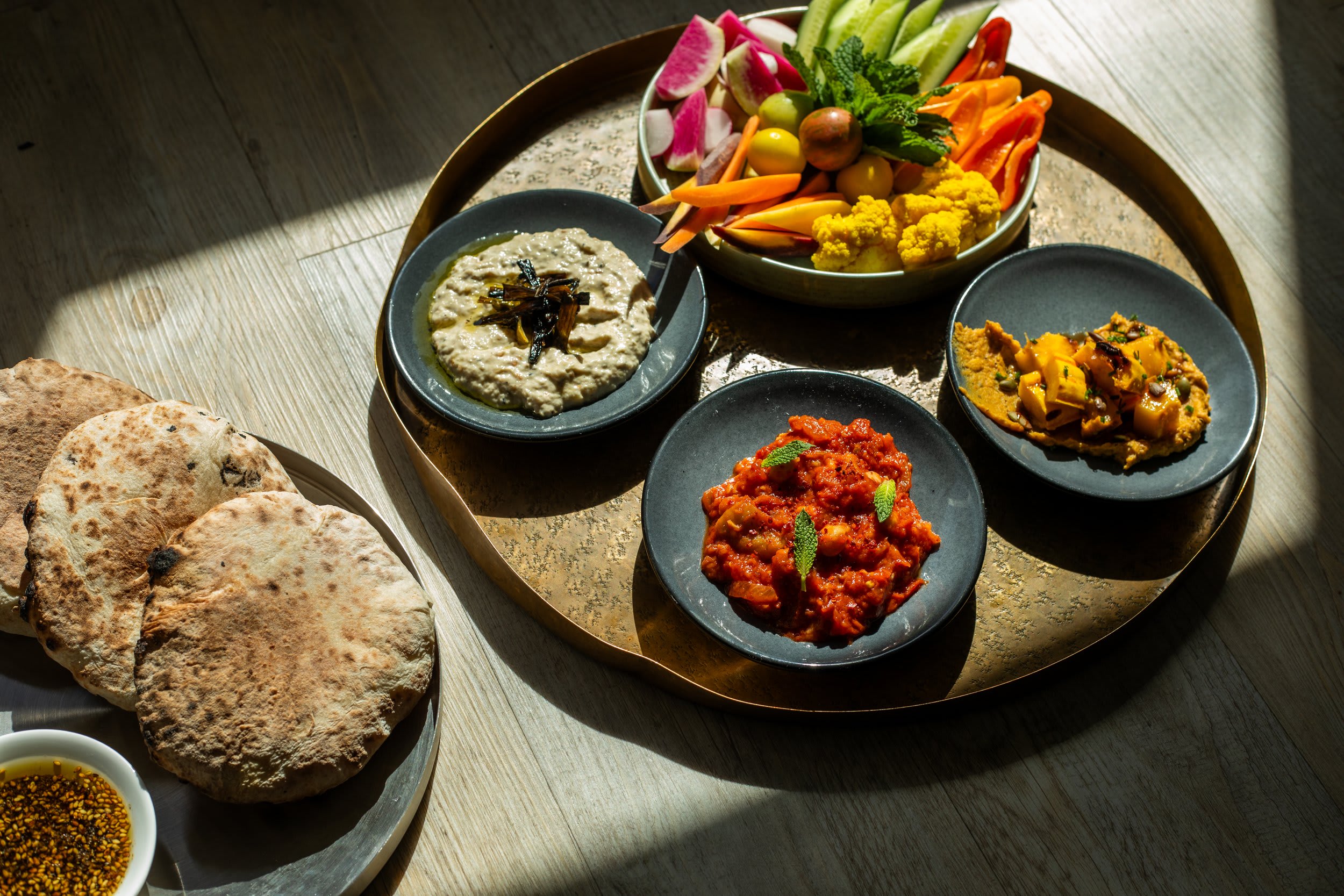
Image courtesy of Randy Schmidt for Shaya
Dakar NOLA, a tasting-menu-only Senegalese restaurant, won the 2024 James Beard Award for Best New Restaurant. It is outstanding.
For upscale Israeli food in elegant environs, check out Shaya.
On Magazine Street, Saba “serves the best Mediterranean and Israeli food I've ever had,” Gray said. Get the blue crab hummus.
Pêche is serious about local, sustainable sourcing. Go for the whole-grilled fish, Alicia said.
Sun Chong serves amazing Asian fusion and cocktails in an effortlessly cool space made even cooler by a classic-hip-hop playlist.
For a neighborhood natural-wine bar with the best local, warm, inviting vibes, go to N7. It serves French food with a Japanese touch. Snag a table in the outdoor courtyard.
Go to Seaworthy for oysters, cocktails and cozy trendy vibes.
Commander's Palace is a New Orleans institution. (It’s been around since 1893.) Come for the “haute Creole” cuisine, stay for the soul.
Galatoire's is great for traditional French bistro vibes and New Orleans French-inflected classics like shrimp remoulade.
For a casual, fun feel and comforting fare, head to Superior Seafood and Oyster Bar.
When in New Orleans, a po’ boy is mandatory. Mahony’s is where to get one.
Turkey and the Wolf is casual, no-frills and “has the most delicious and unique sandwiches around,” Gray said.
Bar wise, you can’t go wrong with Pat O’Brien’s. Order a Hurricane and sit in the piano lounge.
Festivals and events
New Orleans is the “city of festivals.” It goes all out when it comes to décor, especially around the holidays. Know that the festivals are popular for a reason, so expect crowds.
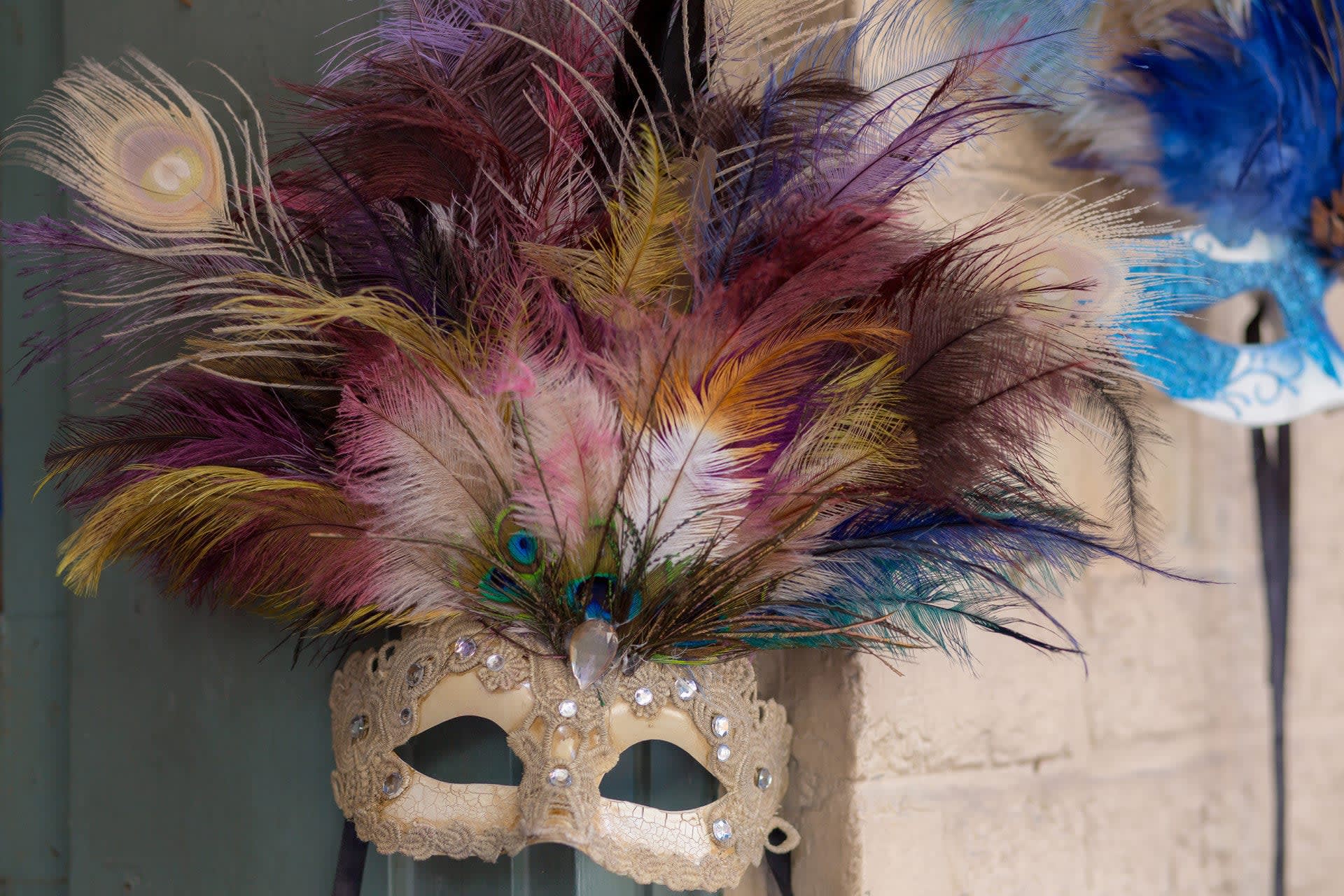
Image courtesy of Four Seasons Hotel New Orleans
February: New Orleans will host Super Bowl LIX, in 2025, at its Caesars Superdome.
March: Mardi Gras, or Fat Tuesday, in French, is a final hurrah that precedes Ash Wednesday and Lent, a period of fasting and restraint. Feast, drink, parade and party before 40 days of repentance.
April / May: Go to New Orleans Jazz & Heritage Festival for the music and parades, stay for high energy and Louisiana cooking.
October: New Orleans has plenty of haunted spots to explore. Halloween is always a fun time here, especially the legendary Krewe of BOO! parade
November / December: The holidays are magical in New Orleans. The whole city gets decorated. You’ll love the lights, shops, parades, ice skating and holiday-themed musicals and shows.
